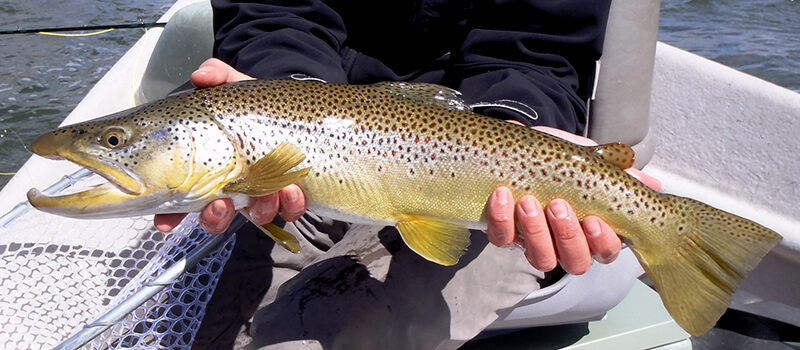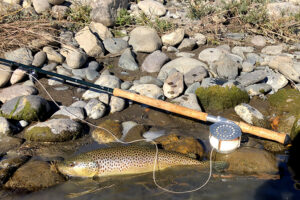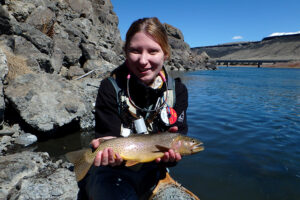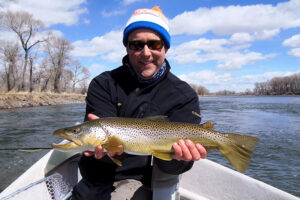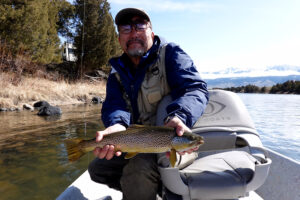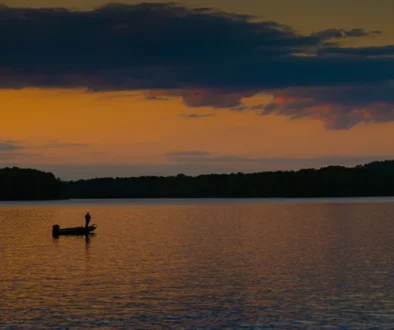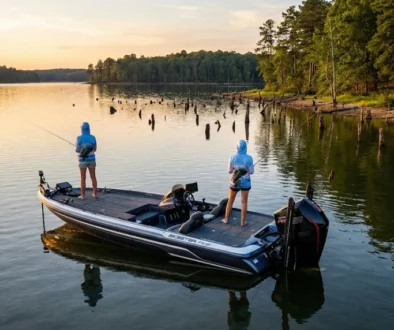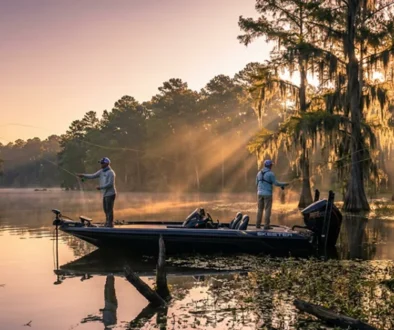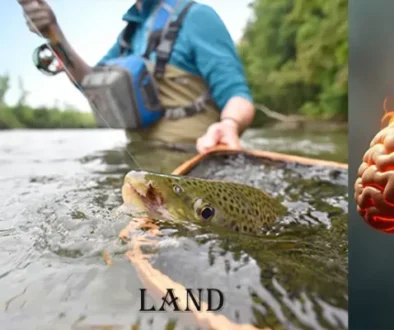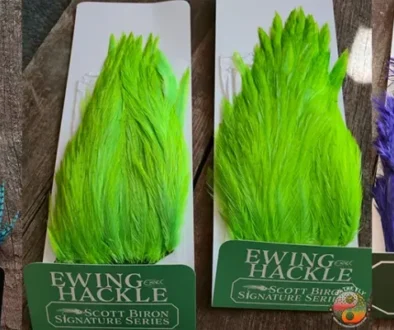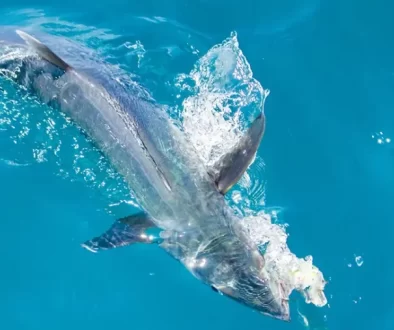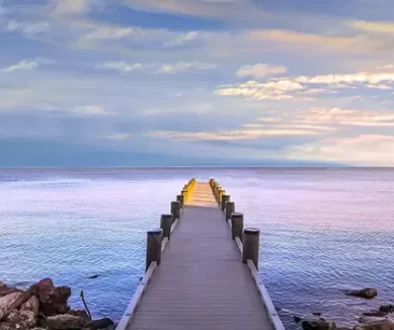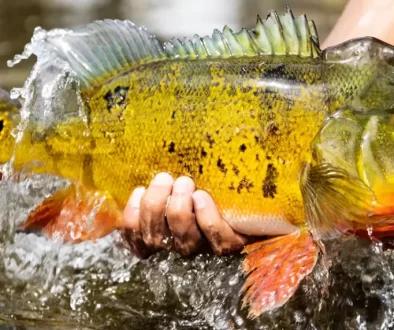Mastering Yellowstone River Season’s On The Fly
Yellowstone River, as it flows out of Yellowstone National Park boundary to Montana, is open for angling throughout the year. Because it’s the longest free flowing river in the Continental USA, i.e., not controlled by any dams throughout, water conditions and fishing situations can vary year to year, season to season, and oftentimes day-to-day basis. Indeed this river can confuse even longtime guides. Don Williams, one of the legendary guides on the Yellowstone River, once said “if you can learn to read the waters of Yellowstone River and consistently catch trout, you can travel the world and be a successful fly-fisher anywhere in the world”. Yellowstone River is indeed a true “learning river”. Understanding the seasons of the Yellowstone will help anglers and guides dissect this immense river for what to expect and look for.
Yellowstone River Winter Fly Fishing Montana
During winter months (December, January, and February), although the river is open for fishing, it tends to be very cold, with lots of snow and ice on the banks, for successful and enjoyable fishing. Slow moving pools usually freeze out. The section around the town of Livingston tends to be ice free due to the confluences of spring creeks, of which water temperature remain constant throughout the year. The main method of fishing is nymphing with staple nymph patterns. On days when winds remain calm and air temperature hovers around the freezing point (32F or 0C), dry-fly fishing with midge hatches can be expected at ice-free sections where spring creeks merge or any other natural spring occurs. There is a certain strain of rainbow trout that become active and spawn during the winter.
Yellowstone River Spring Fly Fishing Montana
As the weather warms up in March, some locals start to float the river for fun. River water temperature remains still cold and the nymphing remains the main methods. On average, as the spring approaches toward the end of March and throughout April, superb hatches of midges and spring baetis can be expected during the warm hours of the day and pods of rising fish can be spotted. This is also the period when rainbow trout become active and spawn. They tend to swim up and spawn in tributaries, including DePuy’s and Armstrong’s spring creeks, fair numbers do spawn in the river’s edges and side channels. As the water temperature reaches 45F (7C), huge brown trout are known to be active, as if waking up from their hibernation, and start to chase streamers. This is when one could catch the largest brown of the year. As air and water temperatures keep rising toward the end of April, all the fly-fishers’ eyes are on the famous Mother’s Day Caddis (sizes 12 to 16) hatch. This caddis are said to hatch in the great mass when the water temperature reaches 55F (13C), however, if sunny and warm spring days continue, the runoff can be triggered. The river could rise high and turn muddy. Yet anglers are encouraged to be patient and keep their eyes on weather patterns. One cold night with the night time temperature in 30Fs (0 to 7C) can subside the runoff on the river and tributaries. Consequently the river drops and clears for another fishing and hatch window. Ideally we expect this pattern repeats a few time through early to mid-May when the runoff finally kicks off.
Yellowstone Park Snow Accumulations Dictate the Runoff of Late Spring and Early Summer Fly Fishing
Snow accumulation in the headwater region of the previous winter dictates the volume of runoff. We keep our eyes on the snow accumulation values in Yellowstone National Park. Typically our winter life in Livingston coincides: cold and brutal winter days with lots snow à huge runoff (25,000cfs or more) and high water flow through summer; or dry and mild winter à average (20,000 to 25,000cfs) or less (less than 20,000cfs) runoff with average or lower summer flow. Besides snow accumulation, spring weather patterns affect how the runoff happens, how long it would last, and then when we could start floating and fishing. When we have series of warm days over 70F (20C) in May, the runoff hits its peak quickly. While when the weather patterns vary through May and early June, mix of hot and cool days with occasional rains, runoff tends to last longer. In a year when the snow accumulation of the previous year was little and nice weather continued through May and June, I started floating the river in the middle of June around Father’s Day. On the other hand, in a year with lots of snow accumulation from the previous winter and the cold days persisted through May and even June, Yellowstone River remained high and muddy through July. On average, my first float trip is booked somewhere between July 10th and 15th, when the river shows “Good Green”. Giant Salmonflies do exist and hatch on the Yellowstone. However, due to the reasons above, whether we can fish for it and if trout would key on are totally up to the condition of the year.
Yellowstone Rivers Summer’s Fly Fishing Montana
Before going further into summer fishing, let me explain “Good Green” as it’s very important when tackling the Yellowstone before runoff and through summer and fall. During those warm months, the Yellowstone is seldom (perhaps never) gin-clear. It is primarily green but it doesn’t mean the river is turbid. Within Yellowstone National Park, the river section below Yellowstone Lake is super clear as it’s often referred as “giant spring creek”. As it runs through a couple of falls and canyons, it’s a fast tumbling river but the water is remarkably clear. Then Lamar River, which is joined by Soda Butte Creek, eventually merges into at the head of Black Canyon. These two streams are the cause of “green stain” that we see in the Black Canyon section (within YNP) and Montana section. Headwater regions of these two streams are known to be soft and fragile, hence there are always some particles floating through them, which are the causes of green appearance. Then when the summer thunderstorms hit near Cooke City, MT, these two, or either one of them, turn very muddy even by 10 minutes of pouring rain. These “mud plugs” flow down to Montana section and the river turns as muddy as runoff (though the water level doesn’t really go up).When the mud-plugs are moving down and while it’s muddy, fishing is totally off. This judgement call and knowing what “good green” is are what differentiate professional and honest guides from those who are doing just for summer jobs. The period when the Yellowstone appears clear, through which we can see the river bottoms clearly, is only in the middle of winter and early spring, during which the Lamar and the Soda Butte are frozen or barely trickling. Also since I mentioned the Lamar and the Soda Butte, let me tell you that I can’t emphasize the immense influences these two streams put on the Yellowstone in Montana section. To sum up, fishing these two streams will immensely help anglers and guides learn and decode the Yellowstone in Montana section.
Runoff can Change the River’s Structures
Another factor of consideration is that the runoff can change the river structures each year. Figuring out where the fish are and how to hook them is a fun part. However, the boat navigation can be dangerous. Flows can shift from one channel to others. The channel that had been navigable in previous years may not exist anymore. Whether guides or Do-It-Yourself float anglers, if one hasn’t floated particular sections for a few years or longer, it’s advised to conduct a test-float or check with fly-shops for the latest updates.
July in Paradise Valley Section of the River
Floating the Paradise Valley section in July is perhaps the most enjoyable experience for any levels of anglers. As the water turns “good green” and reaches comfortable temperature (around 65F or 18C), trout are eager to rise to our dry-flies. Although we typically observe good numbers of stoneflies, mayflies, and caddis hatches, we tie on and cast attractor dry-flies that represent a couple of different insects. Words of caution for the beginning of float season are: the sections along the town of Livingston and then downstream from US-89N Bridge, toward east to Big Timber and further, retain the same water color and appear less crowded, however, flows tend to be higher than the valley section upstream as more tributaries merge in. Waves and rapids can still be very high in an alerting level. Plus these sections consist of many acute corners and channels that could be altered by the runoff. Again, check with local fly-shops for the up to date information and know what you put yourself into!!
As Fall Moves in on the Yellowstone River Montana
Toward the end of August, we usually feel the crisp air in the morning. As the Labor Day weekend comes and goes, we feel the fall is moving in. We start to employ nymphing during the early hours and when dry-fly fishing is not quite producing. On sunny and warm days, we can still expect good dry-fly fishing with grasshoppers around noon and till the sun starts to wane. Flows keep dropping and the river looks like totally different from July. As the season changes and now water temperature starts to drop, trout will keep shifting their holding spots. These constant changes will keep challenging guides and anglers and the ability if one can observe and adjust to these changes or not is what differentiate the truly good guides from those who would like to think they know the river – remember Don William’s mantra?
Season of the Streamer Late Fall on the Yellowstone River
Toward the end of September and into October, weather cools down and we observe the fall baetis hatch and spot pods of rising trout. At the same time, brown trout start to get ready and active for their spawning time. They are known to crush our streamers aggressively as they develop hormonal surges and territorial behavior. This is another time of year one can challenge for trophy trout. Nymphing can certainly be effective. A friendly reminder is that whitefish become active in the fall and we tend to catch perhaps the biggest “whities” of the year with nymphs, sometimes even with streamers.
In November, although it’s usually not wintery cold yet and many trout are still active, it tends to be very windy throughout the area. Float fishing must be carefully planned. Wade fishing from various fishing accesses on cooperative weather days may be more desirable than float fishing and can be equally productive.
As November passes by and December rolls in again, let’s start monitoring snow accumulations in the headwater regions and tie flies for the next season!!
Learn From A Guide
Get to know the river intimately by hiring a guide who floats and fishes the Yellowstone River Click Here.
Or fill out the form Below.
[wpforms id=”2390″]
